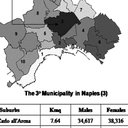Role of pH in the pathogenesis of dermatophytoses.
Kata kunci
Abstrak
The secretion of proteolytic enzymes by dermatophytes is a key factor in their invasion and subsequent dissemination through the stratum corneum of the host. During the first stages of infection, dermatophytes respond to the skin by de-repressing a number of genes coding for proteins and enzymes such as adhesins, lipases, phosphatases, DNAses, non-specific proteases, and keratinases. These proteins have their optimal activity at acidic pH values, which matches the acidic pH of human skin, allowing the pathogen to adhere and penetrate the host tissue, scavenge nutrients and overcome host defence mechanisms. The conserved PacC/Rim101p signal transduction pathway mediates diverse metabolic events involved in ambient pH sensing and in the virulence of pathogenic microorganisms. The seven dermatophyte genomes analysed here revealed the presence of the PacC/Rim101p pH-responsive signal transduction pathway, which consists of the six pal genes (palA, B, C, F, H and I) and the transcription factor PacC. The PacC binding site was present in the promoter regions of pacC, palB, palI and palH genes of all dermatophytes, suggesting functional equivalency with the signalling cascade of other fungi. Moreover, the promoter region of pacC gene of the seven dermatophytes had multiple PacC DNA-binding sites, suggesting that these genes, like their homologues in model fungi, are auto-regulated.


